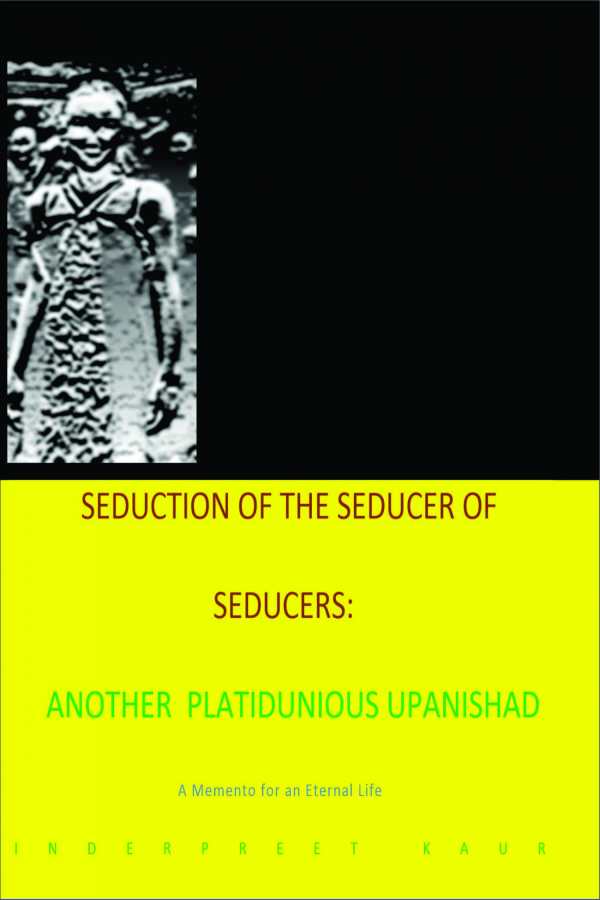
Seduction of the Seducer of Seducers--Another Platitudinous Upanishad
A Memento for an Eternal Life
The Seduction of the Seducer of Seducers–Another Platitudinous Upanishad is a diverse collection of literary works that question the power of heterogeneous paradigms.
Inderpreet Kaur’s Seduction of the Seducer of Seducers–Another Platitudinous Upanishad is an expansive anthology that navigates a plethora of forms to discern a shapeshifting memento mori.
Narrated by a philosopher, the book is split into four phases of actualization and is devoted to observational poems, short stories, and self-addressed epistles. This philosopher suggests leaving all of one’s epistemic understanding behind to instead trust their authority: “which I disclose before-hand will require your full focus on me in order to make this journey together till the end of this volume, fruitful and meaningful for the both of us.” Their narrative is positioned as the absolute guide.
The dominant portions of the collection concern ethical principles within twentieth-century historical investigations. Mayuri the Peafowl becomes a malleable motif, speaking through a banyan tree, diary entries, astronomy, and shifting spiritual practices; they are used to unite Eastern and Western ideals of empowerment. And the book’s prayerful blurbs are variously woeful about current social issues, devoted to introspective inklings, or given over to mystical judgments that challenge topics like the usefulness of the nuclear family and the struggle for religious obligation. Throughout, the experimental construction of a partial script pairs with epistles to address love in a continuous manner.
The book advances in a stream-of-consciousness form, shifting between character interactions and the narrator’s philosophical duties. Here, seduction is employed as a tool of violence to instill fear as well as enforce gender roles. Mayuri is manipulative, using desire and disgust as tactics that exist along a spectrum. The book introduces mystic symbolism on a global scale in its later acts, while its poems function in a nebulous manner, setting scenes and meditating on each phase of life. And the philosopher is confronted by the limitations of the mind, body, brain, and soul.
Amid the book’s religious commentary, astrological configurations are framed as family conversations, used to confront the value of a supportive, challenging, and balanced upbringing. The syncratic overtones and imagery in the collection reflect an increasingly complex heterogeneous world. The book manipulates its forms to challenge concepts of morality in a world of gray spaces. The cacophony of voices present in the text reflects competing worldviews, all vying for human attention in a digital world and working to combat the rocky culture wars that characterize twenty-first-century life. The stark contrast between the book’s application of age-old wisdom, and its addressing of modern issues, serves to question whether tradition can be a balm.
The book pieces together fragments from world religions in kaleidoscope form, too; it employs innumerable fonts, techniques, and outright fictions. Its shattering motifs permeate all aspects of its work. Its characters’ motivations are obscured; the whole melts down. In the end, the multi-pronged breakdown of forms and subjects contributes to overwhelm and unfulfilled urgency alone. Though aimed at saving humanity from forces of evil, the book’s lack of clarity when it comes to form, syntax, and context undermines it. It ends up pitting its own authority against reality.
The Seduction of the Seducer of Seducers–Another Platitudinous Upanishad is a diverse collection of literary works that combine to question the power of a heterogeneous paradigm in a world in constant peril.
Reviewed by
Attorious Renee Augustin
Disclosure: This article is not an endorsement, but a review. The publisher of this book provided free copies of the book and paid a small fee to have their book reviewed by a professional reviewer. Foreword Reviews and Clarion Reviews make no guarantee that the publisher will receive a positive review. Foreword Magazine, Inc. is disclosing this in accordance with the Federal Trade Commission’s 16 CFR, Part 255.
